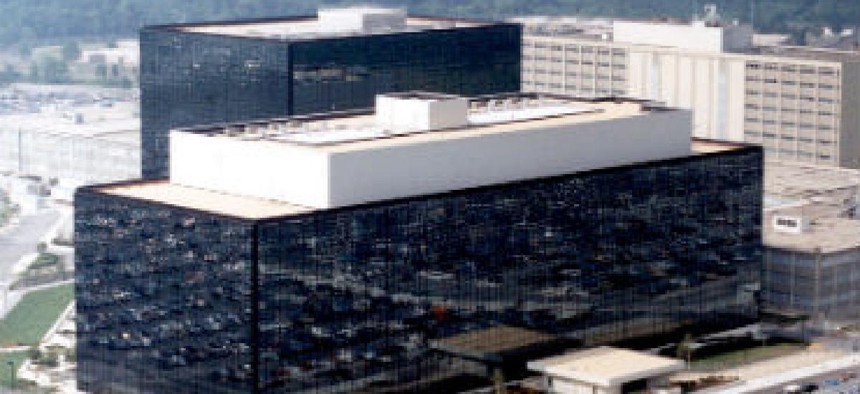NSA official: ICITE could boost metadata capabilities

Regardless of the source of metadata, "you're going to get improvements by merit of how the data is tagged and how the attributes are assigned," NSA Deputy CIO Sally Holcomb said.

A National Security Agency official hinted that the intelligence community's adoption of a common IT architecture could compensate for any drop-off in the IC's metadata capabilities after a key change to NSA's bulk data collection program last year.
"Any time you have good metadata, you can get value from that metadata by correlating it with others," said Sally Holcomb, NSA's deputy CIO. "So regardless of the source of that, you're going to get improvements by merit of how the data is tagged and how the attributes are assigned, to both the individual and the data." She made the comments at a conference hosted by Defense One and the Intelligence and National Security Alliance on April 26.
The USA Freedom Act required NSA to stop collecting bulk telephone data -- information such as the length of phone calls but not their content -- on millions of Americans. Since that change in November 2015, telephone companies retain the metadata, which the government needs legal permission to access.
Some lawmakers have lamented what they say is the neutering of an important counterterrorism tool, while others, such as privacy advocate Sen. Ron Wyden (D-Ore.), hailed the program's alteration.
Changes to the metadata program notwithstanding, NSA's powers of data correlation have arguably been augmented by the Intelligence Community IT Enterprise, a four-year-old program that allows for easier data sharing among intelligence agencies through common standards and cloud storage.
Director of National Intelligence James Clapper has made ICITE central to his efforts to further modernize U.S. espionage. Intelligence officials have hailed progress, including 50,000 IC employees who now use a common desktop environment, said Kendrea DeLauter, IC Desktop Environment joint program manager at the Defense Intelligence Agency. That is compared to 9,000 users reported in September 2014.
At the same time, however, officials complain that some users are clinging to their old ways rather than embracing a common platform. Former Acting DIA Director David Shedd told FCW last year that cultural resistance was the single biggest obstacle to ICITE adoption.
New polling supports that assessment. In a Government Executive survey of about 100 IC officials, nearly half cited cultural resistance to change as the greatest nontechnical challenge to ICITE.
Beth Flanagan, ICITE mission lead at the National Geospatial-Intelligence Agency, said she preferred to characterize the challenge as one of cultural understanding rather than resistance.
Some analysts have "heard of this thing called ICITE, and it's going to change their lives, but they don't really know what that means," she said at the Defense One/INSA event. "Because it's change -- and we've been going through a lot of change in the IC -- there's a lot of misunderstanding."
"We don't speak the same language in the IC agency to agency...and we certainly don't speak, necessarily, the same language between IT professionals and mission professionals," Flanagan added.
The IC could also use more data scientists to better understand the explosion in analytical tools offered by the private sector, said Thomas Husband, chief of DIA's Mission Transformation Task Force. Many of those tools "are a little more technical than our standard analyst is able to apply," he added.
NEXT STORY: GSA sets summer expectations for EIS, Alliant 2





